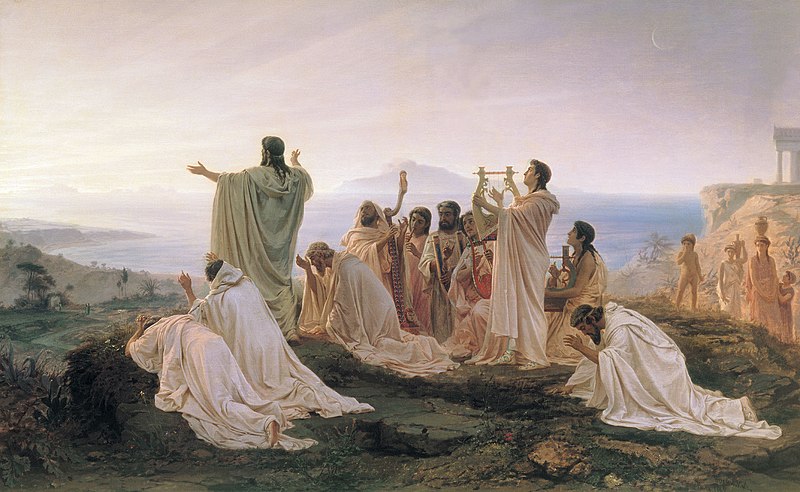http://en.wikipedia.org/wiki/Fractal
"A fractal is "a rough or fragmented geometric shape ..."
Geometric: of or relating to geometry.
http://en.wikipedia.org/wiki/Geometry
"Geometry ... is a branch of mathematics ..."
Math is imaginary, geometry is imaginary, fractal is imaginary. Fantasy.[/QUOTE]
In ancient Scholasticism there were two schools of thought. then 7 then nine ending with theology. Spot the difference between it and Pythagoreanism. Note the influences from that time to the present era. There is not much new on television.
Scholastic schools had two methods of teaching. The first was the lectio: a teacher would read a text, expounding on certain words and ideas, but no questions were permitted; it was a simple reading of a text: instructors explained, and students listened in silence.
The second was the disputatio, which goes right to the heart of scholasticism. There were two types of disputationes: the first was the "ordinary" type, whereby the question to be disputed was announced beforehand; the second was the quodlibetal, whereby the students proposed a question to the teacher without prior preparation. The teacher advanced a response, citing authoritative texts such as the Bible to prove his position. Students then rebutted the response, and the quodlibetal went back and forth. Someone took notes on what was said, allowing the teacher to summarise all arguments and present his final position the following day, riposting all rebuttals.
Trivium
Grammar is the mechanics of a language; logic (or dialectic) is the "mechanics" of thought and analysis; rhetoric is the use of language to instruct and persuade. Sister Miriam Joseph described the three parts of the Trivium thus:
Logic is the art of thinking; grammar, the art of inventing symbols and combining them to express thought; and rhetoric, the art of communicating thought from one mind to another, the adaptation of language to circumstance.
Another description is:
Logic is concerned with the thing as-it-is-known,
Grammar is concerned with the thing-as-it-is-symbolized, and
Rhetoric is concerned with the thing-as-it-is-communicated.[2]
The study of logic, grammar and rhetoric was considered preparatory for the quadrivium, which was made up of arithmetic, geometry, music, and astronomy. The trivium was the beginning of the liberal arts. At many medieval universities this would have been the principal undergraduate course. However, the contrast between the simpler trivium and more difficult quadrivium gave rise to the word "trivial".
Quadrivium
These four studies compose the secondary part of the curriculum outlined by Plato in The Republic, and are described in the seventh book of that work.[1] The quadrivium is implicit in early Pythagorean writings and in the De nuptiis of Martianus Capella, although the term was not used until Boethius early in the sixth century.[2] As Proclus wrote:
The Pythagoreans considered all mathematical science to be divided into four parts: one half they marked off as concerned with quantity, the other half with magnitude; and each of these they posited as twofold. A quantity can be considered in regard to its character by itself or in its relation to another quantity, magnitudes as either stationary or in motion. Arithmetic, then, studies quantities as such, music the relations between quantities, geometry magnitude at rest, spherics [astronomy] magnitude inherently moving

Two schoolsAccording to tradition, Pythagoreanism developed at some point into two separate schools of thought, the mathēmatikoi Μαθηματικοι ("learners") and the akousmatikoi Ακουσματικοι, ("listeners"). The mathēmatikoi were supposed to have extended and developed the more mathematical and scientific work begun by Pythagoras, while the akousmatikoi focused on the more religious and ritualistic aspects of his teachings. The akousmatikoi claimed that the mathēmatikoi were not genuinely Pythagorean, but followers of the "renegade" Pythagorean Hippasus. The mathēmatikoi, on the other hand, allowed that the akousmatikoi were Pythagorean, but felt that their own group was more representative of Pythagoras
Pythagorean thought was dominated by mathematics, but it was also profoundly mystical. In the area of cosmology there is less agreement about what Pythagoras himself actually taught, but most scholars believe that the Pythagorean idea of the transmigration of the soul is too central to have been added by a later follower of Pythagoras. The Pythagorean conception of substance, on the other hand, is of unknown origin, partly because various accounts of his teachings are conflicting. The Pythagorean account actually begins with Anaximander's teaching that the ultimate substance of things is "the boundless," or what Anaximander called the "apeiron." The Pythagorean account holds that it is only through the notion of the "limit" that the "boundless" takes form.
Pythagoras wrote nothing down, and relying on the writings of Parmenides, Empedocles, Philolaus and Plato (people either considered Pythagoreans, or whose works are thought deeply indebted to Pythagoreanism) results in a very diverse picture in which it is difficult to ascertain what the common unifying Pythagorean themes were. Relying on Philolaus, whom most scholars agree is highly representative of the Pythagorean school, one has a very intricate picture. Aristotle explains how the Pythagoreans (by which he meant the circle around Philolaus) developed Anaximander's ideas about the apeiron and the peiron, the unlimited and limited, by writing that:
... for they [the Pythagoreans] plainly say that when the one had been constructed, whether out of planes or of surface or of seed or of elements which they cannot express, immediately the nearest part of the unlimited began to be drawn in and limited by the limit.

No comments:
Post a Comment